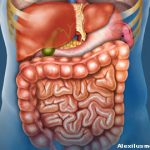NEW YORK (Reuters Health)—Dose optimization of infliximab is needed much earlier in ulcerative colitis than in Crohn’s disease, a single-center retrospective study reveals.
“We compared the rates of dose increases over a fairly lengthy period of time,” said Dr. Mark Silverberg, the study’s senior author from the Mount Sinai Hospital in Toronto.
“Patients with ulcerative colitis needed dose optimization at seven months, compared with 27 months for Crohn’s disease,” he told Reuters Health. “The bottom line is that standard dosing regimens (for ulcerative colitis) are insufficient.”
As reported online June 26 in the Journal of Crohn’s and Colitis, the researchers reviewed all cases of maintenance infliximab therapy at their hospital to see whether dose optimization varied depending on whether patients had Crohn’s disease or ulcerative colitis. Dose adjustments had been up to the doctor’s discretion, with no standardized approach.
Using the hospital’s infusion center database, they identified 412 patients who had received at least four infusions of maintenance infliximab therapy for Crohn’s disease or ulcerative colitis between 2008 and 2014.
Overall, 52.7% needed dose optimization at least once. However, 67.2% of patients with ulcerative colitis had at least one dose optimization, compared with 46.3% of patients with Crohn’s disease.
Dr. Silverberg speculated on the mechanism, noting that the colon, at 90 cm, presents “a greater burden of disease than the smaller segmentary surface area inflamed by Crohn’s disease, as well as different drug metabolism.”
In email to Reuters Health, Dr. Stephen B. Hanauer, Medical Director of the Digestive Disease Center at Northwestern Medicine in Chicago, commented: “We are finding that UC often requires somewhat higher doses. The bottom line is that the overall inflammatory burden will dictate the need for dose optimization.”
“In hospitalized patients with UC, we usually start with 10 mg/kg,” Dr. Hanauer said. “Many patients need re-dosing within a week due to higher inflammatory burden and fecal losses of antibody.”
The authors—and Dr. Hanauer—pointed to two limitations of the Toronto study: its retrospective design and the absence of a standardized dose optimization method.
In a paper in the June print issue of Gastroenterology (published online in February), a separate team of researchers questions conventional infliximab dosing protocols, which are guided by symptoms. Instead, Dr. Niels Vande Casteele from University Hospitals, Leuven, Belgium and colleagues tested a strategy of adjusting infliximab dosing based on trough concentrations.
In the randomized TAXIT trial, during a lead-in optimization phase, drug levels in all patients – 178 with Crohn’s disease and 85 with ulcerative colitis – were titrated up or down if they were not in the range of 3-7 ug/mL. Then, in the maintenance phase of the trial, patients were assigned either to ongoing drug monitoring, with drug levels adjusted to reach target, or to dosing adjustment only for a clinical flare.
For Crohn’s disease patients, dose escalation for insufficient infliximab trough levels led to a marked increase in remission compared to before dose escalation (88% vs 65%).
Furthermore, dose reduction in both diseases—Crohn’s disease and ulcerative colitis—achieved significant cost savings, with no increase in flares or inflammatory markers.
However, the authors reported, 66% in the clinical dosing group and 69% in the trough-level dosing group achieved the primary endpoint, remission—a difference that was not statistically significant.
Still, the authors write: “Our results indicate that adaptive dosing of infliximab based on exposure results in better short-term clinical outcomes and that by maintaining this adequate exposure, the risk for level of response can be reduced.”
In a Gastroenterology editorial, Dr. Shomron Ben-Horin from Tel-Aviv University in Tel Hashomer, Israel calls the lead-in dose optimization phase “a landmark step forward in therapeutic drug monitoring-based care.”
It shows, he continued, that one-time measurement of drug/antidrug antibody levels “during seemingly successful maintenance treatment reveals a non-negligible portion of Crohn’s disease patients who will benefit from dose escalation to achieve better control of underlying inflammation.”
He also gives high marks to the therapeutic dose monitoring strategy in helping patients avoid disease flares and go about their lives normally.
Ultimately, Dr. Ben-Horin predicts, the therapeutic dose monitoring approach will likely guide more optimal induction protocols, as well as proactive dose titration, and finally guide reactive interventions for loss of response to anti-TNF therapies.
Dr. Hanauer, however, notes that as encouraging as the data are, they’re from one center in Europe.
“In Europe, the cost of the assay is about $50, whereas in the United States, the cost ranges between $350 and $2500,” he said. “There are potential cost savings, but more likely, cost increases, based on current cost/dose instead of cost per patient. The cost of the anti-TNFs have been based on rheumatology and dermatology, while the dosing for inflammatory bowel disease is up to two to four times the dosing of rheumatoid arthritis.”
That aside, Dr. Hanauer predicts use of therapeutic drug monitoring will grow. “Therapeutic drug monitoring is being incorporated into treat to target therapies and personalized medicine,” he said.


